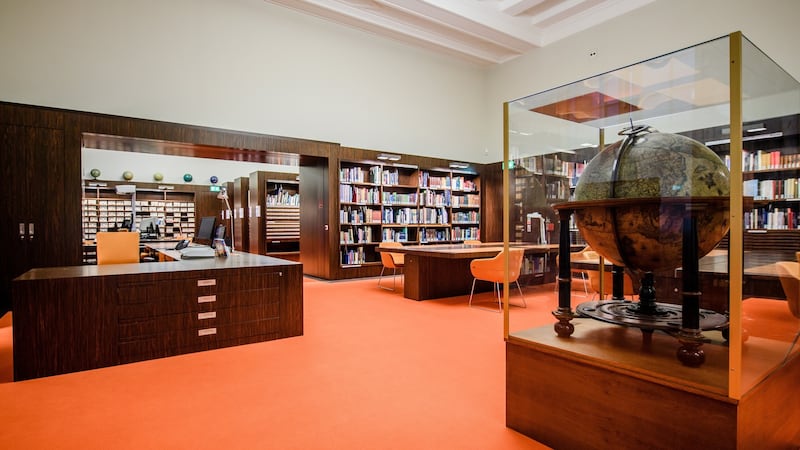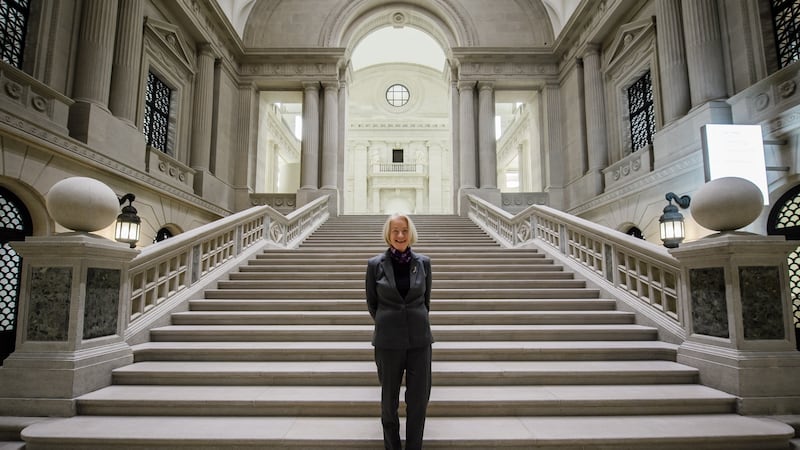The weak ink is barely visible on the brittle 14th-century parchment, but its message could be ripped from the headlines of our pandemic era. The author recalls how “around the start of spring . . . the illness began to show terribly and remarkably its shocking devastating effect”.
“The epidemic gained even more strength by spreading from the sick to the healthy, just as fire attacks flammable material,” warns Italian writer Giovanni Boccaccio in the original manuscript of his Decameron.
His landmark collection of stories, in the case above about the Black Death, dates from 1349 and is just one of the many highlights of Berlin’s state library.
Other treasures include 80 per cent of Bach’s original scores – including the Passions – and the largest collection of Mozart manuscripts, including the Magic Flute. In storage nearby: the original score of Beethoven’s iconic ninth symphony.
From its 17th-century origins as the royal collection, the state library opened its doors first in 1785 in a building now housing the law faculty of the Humboldt University.
In 1914 the library moved to its current home and was an instant hit with loyal readers including the philosopher Walter Benjamin and scientist Albert Einstein.
Archives evacuated
After the first wartime bombing in 1941, the books and archives were evacuated to 30 monasteries, castles and abandoned mines around the country. But 900,000 volumes still vanished while, back in Berlin, Allied air raids destroyed huge swatches of the building, including the 35m glass dome.
Then 40 years of socialism took care of the rest: the provisionally reconstructed reading room was demolished in the 1970s and replaced with concrete book-storage towers.
German unification saw the state library in East Berlin merged with its parallel institution on the other side of the wall in West Berlin. The golden colossus of a building, the western state library by German architect Hans Scharoun, still stands opposite his other city landmark, the Berlin Philharmonic.

Together their collection, spread over the two locations, numbers at least 25 million objects.
But the library’s historic home has, since 2005, been one of the German capital’s many slow-motion building sites. For years I’ve watched a nondescript weed, adjacent to the builders’ containers, turn into a rather magnificent plant, several metres high, to rival any sunflower.
But after 15 years, it’s time to remove the containers and spread the weedkiller.
The state library on Unter den Linden Boulevard reopened on Monday but the Covid-19 pandemic made it a closed-door affair. For now, Berliners have to content themselves staring at the facade of the building, similar in hulk to the Reichstag and occupying an entire city block, with floor space the equivalent of four GAA pitches.

For some the library is proof of how education and accessibility of information was prioritised in imperial Berlin. Others see in its size and bombast a belated state playing catch-up.
“Berlin didn’t want to be inferior to other great cultural metropoles – Paris and London – and with this building . . . the state library was catapulted into the premier league of world libraries,” said Prof Hermann Parzinger, head of the Prussian Cultural Heritage Foundation that oversees many of the capital’s major institutions, including the state library. “The opening today somehow ends the postwar history of this building.”
Restored in stages
During its €470 million renovation, the historic building was restored in stages and the GDR storage removed.
Old neo-baroque elements now sit opposite the new. A striking glass-box reading room, with gaudy orange carpet and 650 reading places, opened its doors in 2012. At Monday’s modest opening ceremony – streamed online – Bundestag president Wolfgang Schäuble said such institutions had never been more essential.
“Earlier libraries were considered information monopolists,” he said. “Today their task is to prevent commercial information monopolies.”
In many speeches, German officials praised the library and its staff for their hard work keeping the lights on and doors open during the renovation.
For many watching online – including visiting researchers – such claims are as annoying as they are misleading.
The library’s new reading room has been closed since November 2019, seven years after it was completed, with no access to the historic collections. Even more frustrating for researchers is how, unlike in the past, they have been unable to order volumes from the main collection to read at the library’s second premises near Potsdamer Platz.
“None of the librarians are able to explain what’s going on or why,” said one visiting researcher to The Irish Times, after fruitless months in the city. “They are celebrating their world-class status but, with this cavalier attitude, they are failing in their task as a public state library.”











